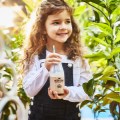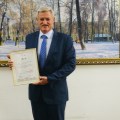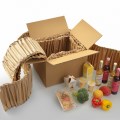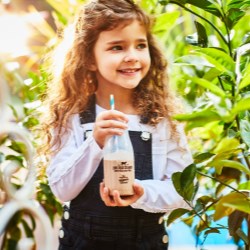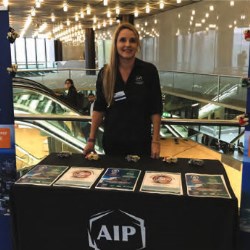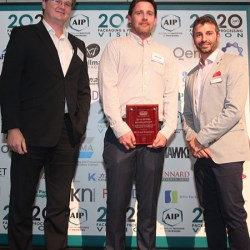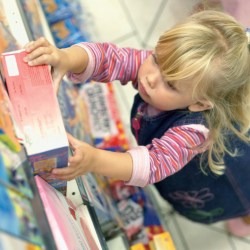If this is your company, CONTACT US to activate Packbase™ software to build your portal.
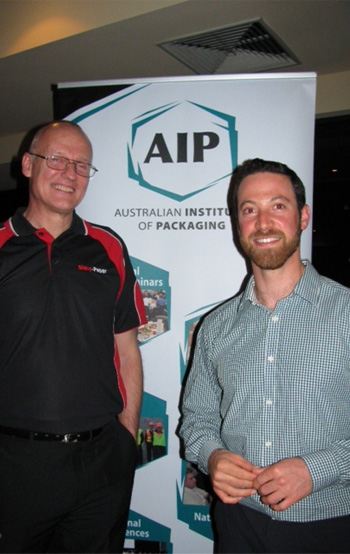

The earth gave up the ingredients for two diverse raw materials from which paper can be made. Feedstock sourced from cellulose materials is now in competition with a raw material that may predate trees. John Brannan, Sales Manager Network Marketing and Ian Krawitz, Project Director 10 Thousand Trees were the presenters at the August meeting of Australian Institute of Packaging which was held jointly with APPITA in Melbourne, and delivered thought provoking messages.
The draft of this report, although it will not be turned into a hard copy is being composed in Arial Narrow font as an indication that simple things can get you greening credits. Arial Narrow allows you to graphically have more words per page and so reduces paper used if you have printed this report out rather than reading on screen. This was one of the sustainability pointers given by Ian Krawitz but first we were addressed by John Brannan who supplied samples of Stone-Paper
Stone-Paper reminded some of the once ubiquitous glassine for its smooth as silk touch and many other attributes of the aforementioned. Yes, it is made from stone, is water resistant, tree free, acid free, durable, versatile and earth friendly. It prints and finishes like traditional wood pulp fibre papers and has the versatility and durability of synthetic papers. The material is made from calcium carbonate (CaCO3) powder using propriety additives as a bonding agent, but no water is used in the manufacturing process.
The finished product comes in two grades comprising of stone and polyethylene in a mix of 80/20 or 60/40 but is still recyclable although a composite. Calcium carbonate is used in paper manufacture. Technically it could go in the paper chain however due to the content of PE resin the manufacturer recommends recycling in the number 2 classification.
The calcium carbonate is collected as waste material at existing limestone quarries and is ground up into a fine white chalk to which a small quantity of non-toxic resin is then added and fine paper results. The manufacturing plants for the world supply are in Taiwan and China but according to Mr Brannan manufacturing in Australia may not be cost effective due to our labour costs. Samples pads were on all tables and both the packaging (AIP) and wood (APPITA) technologists were amazed by the material. One person remarked, "Stone-Paper you can chalk it up".
Stone-Paper is, according to the advertisement, environmentally preferable as the manufacturing of each tonne saves twenty trees, water, effluent, greenhouse gas emissions (and so carbon tax) and energy. One tonne of stone produces one tonne of Stone-Paper but it requires four tonnes of wood pulp for traditional paper. Stone-Paper can be laminated to all substrates and is FDA approved for food contact and is being used in many applications such as carrier bags, food trays, envelopes, carton packaging, posters, advertising promotions, self adhesive labels and tags. Being water proof was one attribute promoted which coincidentally was made as a glass of wine was tipped and saturated the table cloth but the Stone-Paper sample was able to be wiped clean and showed no deleterious effect.
Before the wine affected more of the assembly, Ian Krawitz took the podium and talked through the mission and achievements of the not-for-profit company 10 Thousand Trees, a paper offset initiative. He commenced the most interesting desideration with advice that for Green Marketing you need a holistic message, which was exactly what was delivered as he enunciated the company goal "to make better industry in Australia".
10 Thousand Trees has been in operation for eight years and has committed to making a positive footprint on the environment. The thrust is to simplify the process for Australians to contribute to an environmentally sustainable future. Trees are planted on Australian farmlands on a land lease arrangement giving the owner a secondary income. The establishing of windbreaks in the planting process improves adjoining pasture and animal comfort. Trees are insured against fire and wind so the partner's investment won't go up in smoke or be blown away. Sites are strategically selected in places with good rainfall, top soil quality and correct soil depth and proceeds of each harvest are reinvested back into planting more trees.
Any investor will advise that compound interest is advisable and compounding trees is also desirable. Ten trees planted today, through a continual cycle of harvesting and reinvesting proceeds will grow into 10,000 trees for our grandchildren's future (or 120 years). Farm forestry has the opportunity to compound trees by replanting continually and handing "the seedlings" to the next generation. It is estimated that a harvesting will occur every 12 years, with an aim of doubling the trees in the ground every 12 years.
Australia is paper rich but future poor and the country uses more paper in a week than the average Indian uses in a year. It is only 185kg per person per annum but offshore the trees to produce the paper are not all from legal sources. It is estimated that 13% of timber globally comes from illegal logging diluted by the legalization of "legal" logging by corrupt Governments. Each year a net area the same size as Tasmania is denuded by illegal logging in some far off country. Ian explained that every two seconds two "football fields" are harvested but at the same time five new consumers arrive on the planet.
Ten percent of consumers make a green element a significant part of their buying decision but of the other ninety as little as three percent of their decision is based on environmental considerations. Australia uses 4.2 million tonnes of paper per annum of which 38% is utilized in packaging. The country is a world leader in recycling newspapers but for general paper and paperboard it lags behind many European countries.
Some interesting facts given were:
- Recycling 1 ton of paper saves 17 mature trees and 2.5m³ of landfill space.
- Recycling one ton of cardboard saves 7m³ of landfill.
- Each year Australians buy 35 million rolls of "safe" toilet tissue made from clean office waste paper (over 6 million sheets of A4 paper recycled for every day of the year).
Top 10 "paper-less" tips
- Go digital
- Think before You print or copy
- Use duplex capable copiers and printers
- Reduce business junk mail
- Switch from disposable to re-usable
- Educate the Organisation
- Print more words on each page
- Don't print Web pages unnecessarily
- Give it a second chance
- Use lower weights of paper (GSM)
The presentation only whetted the appetite of those who have Corporate Social Responsibility but the salient concluding message was: THE LEGACY BEGINS WITH YOU!
Environmental impact needs to be positive, measurable, and aligned: be proactive not neutral and take environmental initiatives that deliver a contribution which aligns to use of resources in both the short and long term - enabling a competitive edge when targeting green friendly clients!
The evening ended with many people writing notes on Stone-Paper about cellulose paper and what they can do for our future. Stone-Paper has no grain direction which obviously contributed to the delegate who returned to his childhood and made a paper plane that flew a message across the auditorium with very little environmental impact.
Elke Minkevicius supported by Tony Johnson on behalf of AIP and APPITA conjointly hosted the event with the former acting as moderator and making a presentation to John and Ian.


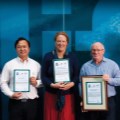
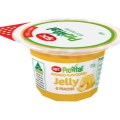
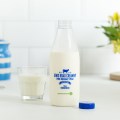
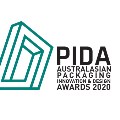
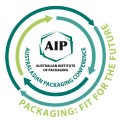
.jpg)

